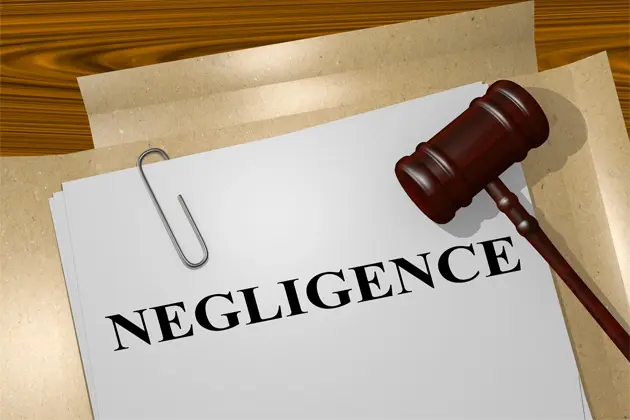Any type of vehicle accident can result in unexpected expenses. Even a minor fender bender can cause injuries and vehicle damage. The last thing you want or need is to be stuck paying for accident-related expenses. Instead, you’re relying on a personal injury claim to help cover all of your expenses.
However, before you can file an accident claim you need to prove negligence. This means understanding negligence in an accident claim and it’s not always easy. Unfortunately, if you can’t prove negligence, there’s a good chance you can’t recover compensation.
What is Negligence?
If you’re planning on filing a personal injury claim, then there’s a good chance you need to prove negligence.
The legal definition of negligence is when an individual fails to behave in a way that doesn’t place others at risk. Negligence can also be defined as an inaction. For example, failing to render aid when your actions cause an accident.
The definition goes on to compare the actions of a negligent individual to those of a reasonable person. Yes, this definition is a little broad especially when trying to figure out what are the actions of a reasonable individual. Everyone has a slightly different idea of what they consider reasonable behavior.
An example of negligence can be if a driver runs a red light. Most responsible people will stop at a red light and wait for it to turn green. Negligent actions can include if the at-fault driver doesn’t stop to render aid after causing a traffic accident. In other words, the statute tends to define reasonable behavior within the guidelines of an applicable law. The law requires all drivers to stop at red traffic lights.
Negligence consists of four key elements and you need to meet the criteria for each one if you want to pursue a personal injury claim.
Duty of Care
Almost everyone owes someone a duty of care. This essentially means behaving in a way that doesn’t place others at risk.
The element can also refer to not increasing someone’s risk of injury. An example can be if you see someone using a ladder, You have a duty of care to not knock the ladder over. Motorists have a duty to other drivers, pedestrians, and cyclists to follow all traffic laws.
Breach of Duty
A breach of duty occurs when an individual doesn’t exercise care. Speeding through a red light is a breach of duty. Remember, your legal duty of care is to obey all traffic laws. Failing to maintain a premises free of hazards like spilled liquid on the floor is another example.
You can also be guilty of a breach of duty if you fail to render aid or ignore a potential hazard. Driving away from an accident with injuries is a breach of duty. You’re also probably facing a potential hit-and-run charge.
In Florida, leaving the scene of an accident can be considered a second-degree misdemeanor and the penalties can range from fines to possible jail time.
Causation
To meet this element of negligence, you must show the at-fault party’s actions are the direct cause of the accident. An easy way to determine if you can meet causation is to use the “but for” analogy.
Your car accident wouldn’t have occurred but for the speeding driver. If the other motorist was going the speed limit, your accident probably wouldn’t have occurred.
Damages
Proving damages is usually the easiest element of negligence to prove. You must show that your damages are caused by the accident. So, if you’re claiming property damage, you show that the dents and dings in your vehicle are the direct result of being hit by the other driver.
A quick side note. Some damages like injuries may be worse than what it seems the accident should’ve caused. An example can be if you’re claiming a broken leg in a minor rear-end collision. The tap on your vehicle’s rear fender shouldn’t have resulted in a broken bone, except you have an underlying condition.
In this instance, the eggshell skull doctrine may apply. The doctrine prohibits insurance companies from reducing damages caused by an underlying medical condition.
Navigating Comparative Negligence in an Accident Claim
You finally have a grasp on proving negligence and you’re ready to file a personal injury claim. However, you may not be quite ready to submit your accident claim. Florida, and a few other states, follow comparative negligence rules. This legal standard can impact your personal injury case.
Comparative negligence recognizes that more than one party may be responsible for an accident. Each involved driver is assessed some of the blame for the accident. You can still file an accident claim, as long as you’re not more than 50% responsible for the vehicle collision. However, your compensation amount will be reduced by your percentage of fault.
How an Accident Attorney Can Help You Prove Negligence
Sometimes, proving negligence can be complicated even if you’re positive you’re not at fault for an accident. Claims can easily turn into battles trying to determine who’s liable for the resulting damages.
Partnering with an accident attorney can help simplify the process and ensure you’re not being unfairly blamed for the collision.
Thoroughly Investigate the Accident
Yes, the authorities and insurance adjuster will investigate the accident but gaps can still be left. These gaps can result in you being assessed more blame than your actions deserve.
Your attorney can also investigate the accident and even bring in additional resources like reconstruction specialists. Your attorney can also subpoena surveillance camera footage and interview any witnesses.
Calculate Your Damages
Figuring out the value of your economic damages is usually pretty easy. You grab your bills and receipts and start adding up the total.
However, do you know how to calculate the value of your non-economic damages? Your attorney can help ensure you’re listing all of your damages, even things like your pain and suffering.
Working with an experienced personal injury attorney can help ensure you can prove negligence and receive the maximum value of your accident claim.










